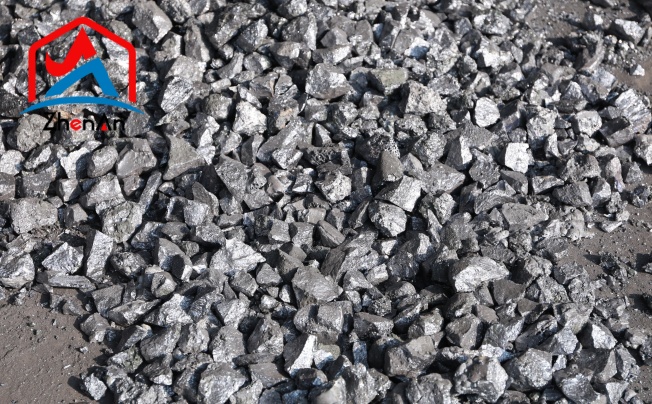The periodic table is a masterpiece of scientific organization, a symphony of elements arranged in increasing atomic numbers to showcase their unique properties and characteristics.
Silicon: The Element
General Properties of Silicon
Silicon, with an atomic number of 14 and the symbol Si derived from the Latin word "silex" meaning flint, is a fascinating element that holds an essential place in the periodic table. As a member of group 14, silicon shares similarities with carbon and germanium. It is a metalloid, showcasing properties of both metals and nonmetals. In its pure crystalline form, silicon exhibits a shiny, metallic luster akin to metals but lacks the ductility and conductivity typical of traditional metals.
Physical Properties of Silicon
When we envision silicon in its natural state, we picture a brittle solid with hues ranging from silver-gray to blue-black-a striking contrast to the gleam associated with many traditional metals. Silicon's melting point stands at approximately 1414 degrees Celsius (2577 degrees Fahrenheit), rendering it solid at room temperature but capable of transitioning into a liquid state under intense heat. Similarly, the boiling point of silicon reaches around 3265 degrees Celsius (5909 degrees Fahrenheit), emphasizing its durability under extreme temperatures.
Crystal Clear Characteristics
In addition to its distinct appearance and characteristic phase transitions, silicon boasts unique physical properties that define its utility in various applications. With a density close to 2.33 grams per cubic centimeter—lower than most metals but higher than nonmetals—silicon strikes an equilibrium between weight and strength suitable for diverse uses. Its crystalline structure contributes to its semi-conductive nature, making it invaluable in electronics manufacturing where controlled conductivity is paramount for device functionality.
Classification of Silicon
Why Silicon is Classified as a Metalloid
Silicon, with its atomic number 14 and symbol Si, is a fascinating element that exhibits properties of both metals and nonmetals. It falls in the category of metalloids on the periodic table due to its unique characteristics. One primary reason for silicon's classification as a metalloid is its intermediate conductivity compared to metals and nonmetals. While metals are excellent conductors of electricity, and nonmetals are insulators, silicon falls in between as a semiconductor. This property allows it to conduct electricity under certain conditions, making it essential in modern electronics.
Moreover, silicon's electronic band structure also contributes to its classification as a metalloid. Unlike metals that have overlapping energy bands allowing free movement of electrons or nonmetals with large energy band gaps blocking electron flow, silicon's band structure lies in between these extremes. This characteristic enables silicon to partially conduct electricity by promoting electron movement when energy is supplied but restricts it at lower temperatures. The intricate balance between these properties makes silicon a versatile element in various technological applications.
Comparison of Metals and Nonmetals in Terms of Properties
In terms of physical properties, silicon shares similarities with both metals and nonmetals but also possesses distinct differences that set it apart. For instance, like metals, silicon is solid at room temperature with metallic luster and high melting point characteristics. However, unlike most metals that are malleable and ductile, silicon is brittle – resembling some nonmetallic elements in this aspect. This brittleness stems from the covalent bonding present in its crystal structure rather than the metallic bonding seen in typical metals.
Additionally, when considering chemical properties, silicon exhibits features akin to both groups but leans more towards nonmetals due to its tendency to form covalent compounds rather than ionic bonds like most metals do.
Silicon forms tetrahedral structures similar to carbon atoms in organic compounds but can also showcase metallic behavior when combined with certain elements or under specific conditions. These inherent dualities make classifying silicon solely as a metal or nonmetal inadequate; hence why it rightfully earns its place among the intriguing metalloid elements on the periodic table.
Silicon's Remarkable Semiconductor Properties
The intrinsic ability of silicon to conduct electricity lies between that of a metal and a nonmetal, making it an ideal material for creating electronic devices.
By carefully controlling the doping process through the addition of specific impurities, such as boron or phosphorus, silicon can be transformed into either a positive (p-type) or negative (n-type) semiconductor. This versatility enables the development of intricate electronic components like transistors, diodes, and integrated circuits essential for modern electronics.
Furthermore, silicon's semiconductor characteristics play a pivotal role in advancing various technological sectors. The integration of silicon-based semiconductors has fueled innovations in computing, communication systems, and renewable energy technologies.
In glass production, silicon dioxide (silica) is a fundamental component that imparts strength and transparency to glass products.
The addition of other elements during glassmaking modifies its properties for diverse applications such as windows, containers, and optical fibers. Silicon's abundance in nature makes it an economical choice for producing high-quality glass with excellent thermal stability and chemical resistance.
In ceramic manufacturing processes, silicon compounds contribute to enhancing the mechanical strength and thermal resistance of ceramic products. Silicon carbide is one notable example used for cutting tools and abrasives due to its hardness and wear resistance properties.
Additionally, silicon nitride provides excellent thermal shock resistance in advanced ceramic applications like engine components and bearings. The versatility of silicon-derived ceramics underscores its importance across various industrial sectors where durability and performance are paramount.
Solar energy technology heavily relies on silicon's photovoltaic properties to harness sunlight efficiently for electricity generation. Solar panels are composed of crystalline silicon cells that convert solar radiation into electrical energy through the photovoltaic effect.
History and Discovery of Silicon
Silicon, a chemical element with the symbol Si and atomic number 14, has a rich history that dates back to ancient times. Its discovery can be traced back to the early 19th century when Thomas Thomson, a Scottish chemist, first identified silicon as an element.
However, it was only in 1824 that Jöns Jacob Berzelius, a Swedish chemist, successfully isolated silicon in its pure form. This groundbreaking discovery marked the beginning of extensive research on silicon's properties and applications.
Over the years, silicon's importance has grown exponentially due to its unique properties as a metalloid. Its ability to conduct electricity under certain conditions led to its pivotal role in the development of semiconductors.
In 1954, Texas Instruments produced the first silicon transistor which revolutionized the electronics industry. This breakthrough paved the way for further innovations in computing technology and solid-state electronics.






